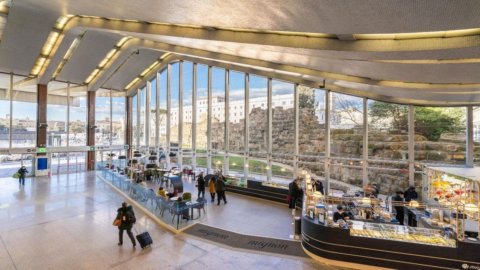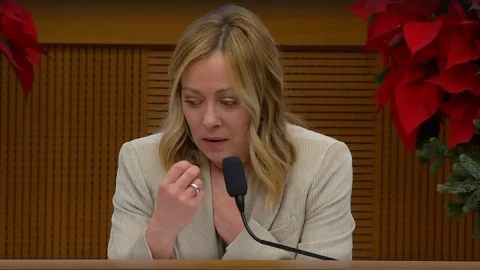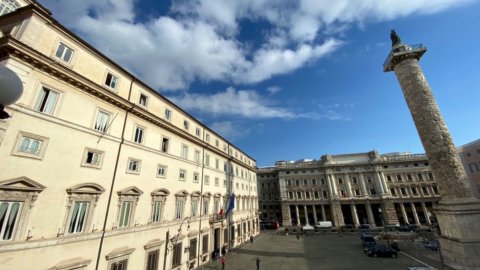Quality food, archeology, sustainability, environment and technology: mixing these four elements has resulted in an elegant meeting place at the Termini station in Rome that aims to be something more than a restaurant for travellers. In the entrance hall, the futuristic project by architects Eugenio Montuori, Leo Calini and Annibale Vitellozzi, which due to its shape was nicknamed the Dinosaur, and that after the recent works it has regained a suggestive view of the Servian walls, the first built to defend Rome by Tarquinio Prisco in the XNUMXth century BC, now hosts "Mignon alle Mura", a space intended for the taste for breakfast, the aperitif the lunch or a simple break.
The spaces of Mignon alle Mura were designed by the AMW Architetti Associati studio, in coordination with Estrogeni&Partners for internal and external communication, with the aim of discreetly enhancing the Servian Walls, which make Termini a unique station in the world
Traditional recipes with an eye to contemporary taste
Materials, shapes and colors sThey were chosen under the banner of sustainability, to minimize the environmental and visual impact. All the furnishings, for example, are made with certified and recyclable wood and materials, completely disassembled and reusable. The lighting is ad high energy efficiency and all the materials are consistent with Termini's style and materials, travertine in the first place. One was chosen for the floor certified and eco-friendly bioactive ceramic, with antibacterial and self-cleaning characteristics.
From breakfast to dinner, via aperitifs and lunch, Mignon alle Mura offers a menu of high quality specialties of Italian cuisine. The The proposed recipes are faithful to tradition but, inside the laboratories, masters and technicians work daily to adapt them to contemporary taste and market trends. Great respect for nature and the environment also in the choice of coffee blends, Mogi coffees, grown by local cooperatives and mainly run by women in organic and sustainable plantations, for a rich variety of aromas, perfumes and preparations.
An offer that starts in the morning with breakfast to arrive at lunch time characterized by savory proposals with sandwiches, rolls, pinsa and salads with the inevitable vegetarian versions by applying an elegant and quality format that focuses on traceable raw materials, with a team all-female led by Maria Acquaviva (CEO), Roberta Virgilio (Brand Manager) and Alessandra Iasiello (Pastry Chef).
Termini Station is there largest station in Italyae the first commercial European station, it is in the ranking of the best European stations (voted by travellers).
Account 210 million visitors a year, 170 Commercial Units of which 40 dedicated to food, 900 trains arriving and departing every day, 48.000 Sqm GLA and over 400 media systems.
The history of Termini Station and the lands of Monsignor De Merode
The original station was built in 1862 in the area of the ancient baths of Diocletian chosen under pressure from Monsignor de Merode, who had real estate interests in the Via Nazionale area, and was inaugurated in the presence of Pope Pius IX.
After the breach of Porta Pia and the annexation of Rome to the Kingdom of Italy, the newborn Municipality of Rome decided to expand the construction site.
The facade of the old station was about 200 m further forward than today and therefore covered almost the entire current Piazza dei Cinquecento. In 1883 electric lighting was installed under the canopies and in the interior rooms of the station. In 1935 the electricity supply network arrived from the north to Termini allowing the arrival of electric traction trains from Florence.
In the thirties of the twentieth century it was finally decided to modernize the railway junction of Rome, in particular by building a new Termini station, enlarged and adapted to the needs of a railway traffic that had grown dramatically compared to the previous century.
An initial project by Angiolo Mazzoni for the construction of the new railway system was interrupted following the worsening of the war situation and the fall of the fascist regime.
In the first months of 1946 Mazzoni's project was shelved and the ministry thus decided to opt for a general revision of the work plan and to launch a competition for a new front building, positioned fifty meters further than that of Mazzoni's project in order to allow a lengthening of the tracks. On the occasion of the 1947 competition, the first prize was awarded ex aequo to the architects Leo Calini and Eugenio Montuori and to the group headed by Annibale Vitellozzi including Massimo Castellazzi, Vasco Fadigati and Achille Pintonello. The station was thus completed according to the new version, with the construction of the front building characterized by the bold canopy, considered one of the most significant examples of post-war Italian architecture, and was inaugurated on 20 December 1950.





